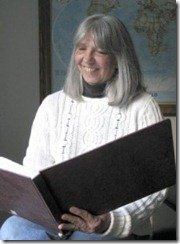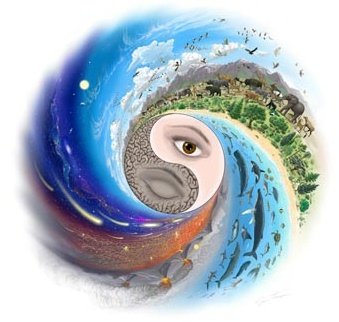by Michelle Wood
Welcome to the March/April issue of Yang Sheng! If Spring has not yet visited your area, I’m sure it will soon! Members of our Yang Sheng staff live all over the United States (with one in China!), and our Spring experiences so far are as diverse as we are: We have everything from “four feet of snow still covering our garden” to “it was sunny and seventy degrees here yesterday!” Our theme this month is Yin-Yang, and our columnists share many wonderful insights into cycles, change, and movement. Our feature this month is What is Yin Yang by Casey Kochmer. He opens with a starting definition: The nature of change, balanced as two halves of a whole. However, a clearer understanding of Yin and Yang requires looking back into the Tao which can be considered as the fundamental absolute. Another interesting theme article isYin, Yang, and Work Life Balance by Peter Morgan. These two energies cause everything to happen. Yang is the masculine principle, and evokes words like active, creative and hard. Yin is the feminine: passive, receptive and soft. The key belief is that one cannot exist without the other! As always,  Early Summer – Blossoming, our Seasonal Harmony author Ellasara Kling leads us into harmony and balance with the season through Five Element Theory of Chinese Medicine and mouth-watering recipes for keeping cool in the heat of summer: Watermelon-ginger juice, Yellow Squash/Red Pepper Congee, and Dandelion/Sweet Potato Soup, to name just a few! We open with an astrological look at the explosive wood and fire energies of 2014 as explained by Michael Winn in Chinese Astrology: Green (Wood) Horse Year Our Dancing Doc, Sharon Montes takes us to new heights in Yin and Yang: Unify to Create Daily Orgasm , revealing that “orgasm offers a perfect model of yin/yang and Tao. Orgasm offers the physical experience of unity, although it is the result of a balance of duality.” You Taiji and Qigong lovers will enjoy two columns! In Can You Grasp The Sparrow’s Tail?, Bob McBrien and Natasha Shangold show how taiji is not only about movement, but also about stillness; and Eric Borreson, in Manifesting Yin and Yang in Taiji, explains how Wuji, neutral emptiness and separates into the yin and yang as you begin to move. We have a sweet poem, Yin Yang You by frequent columnist Raven Cohan, and the fascinating article The Chakras Part One: How the Rainbow Colors came to be by Cindy Cicero. For the scientific-minded, there are excellent colums by Marty Eisen PhD on The Divergent or Distinct Meridians which can be used as a first approach to acute problems before surgical or pharmaceutical therapies are initiated, as an adjunct to the conventional treatment or after the medical treatment has failed, and Research Updates compiled by Kevin W Chen PhD revealing study results on the benefits of meditation, qigong, tai chi, taiji, and yoga on pain management, creativity stimulation, memory, and the ability to concentrate among other topics.
Early Summer – Blossoming, our Seasonal Harmony author Ellasara Kling leads us into harmony and balance with the season through Five Element Theory of Chinese Medicine and mouth-watering recipes for keeping cool in the heat of summer: Watermelon-ginger juice, Yellow Squash/Red Pepper Congee, and Dandelion/Sweet Potato Soup, to name just a few! We open with an astrological look at the explosive wood and fire energies of 2014 as explained by Michael Winn in Chinese Astrology: Green (Wood) Horse Year Our Dancing Doc, Sharon Montes takes us to new heights in Yin and Yang: Unify to Create Daily Orgasm , revealing that “orgasm offers a perfect model of yin/yang and Tao. Orgasm offers the physical experience of unity, although it is the result of a balance of duality.” You Taiji and Qigong lovers will enjoy two columns! In Can You Grasp The Sparrow’s Tail?, Bob McBrien and Natasha Shangold show how taiji is not only about movement, but also about stillness; and Eric Borreson, in Manifesting Yin and Yang in Taiji, explains how Wuji, neutral emptiness and separates into the yin and yang as you begin to move. We have a sweet poem, Yin Yang You by frequent columnist Raven Cohan, and the fascinating article The Chakras Part One: How the Rainbow Colors came to be by Cindy Cicero. For the scientific-minded, there are excellent colums by Marty Eisen PhD on The Divergent or Distinct Meridians which can be used as a first approach to acute problems before surgical or pharmaceutical therapies are initiated, as an adjunct to the conventional treatment or after the medical treatment has failed, and Research Updates compiled by Kevin W Chen PhD revealing study results on the benefits of meditation, qigong, tai chi, taiji, and yoga on pain management, creativity stimulation, memory, and the ability to concentrate among other topics.
Many blessings!
Michelle
